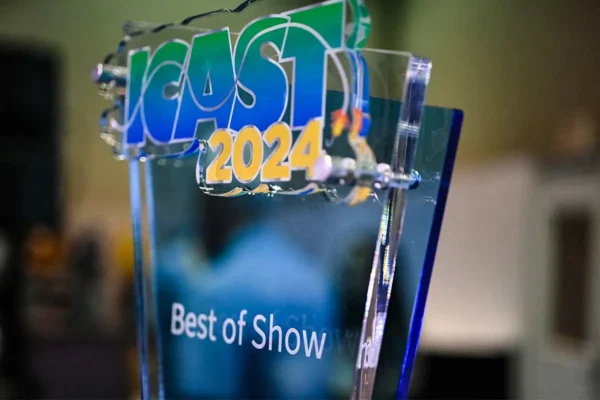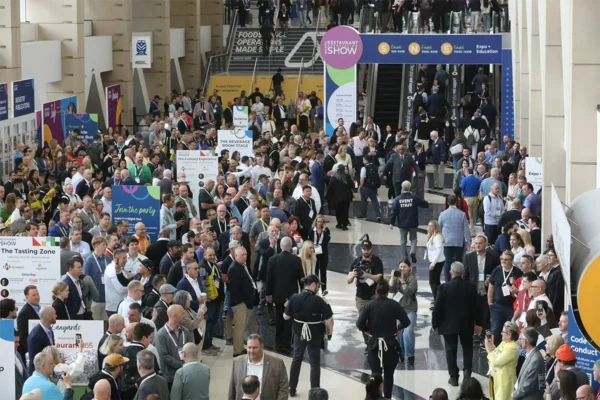by Bob McGlincy
What is, or was, the largest tradeshow in the world?
Any show with more than 500 exhibitors, 10,000 attendees, or 100,000 net square feet of exhibit space is a large show (think of the logistics, time and money to produce such a show). Of course, some shows are much larger. Prior to the pandemic, SEMA attracted 161,879 people, Magic had 4,797 exhibitors and CES had 2,930,421 square feet of exhibit space (and 4,550 exhibitors). MWC Barcelona had 109,000 attendees and 2,400 exhibitors, the Frankfurt Book Show had 7,300 exhibitors and 286,000 attendees, the Chicago Auto Show attracted almost a million people and the Paris Air Show in 2019 had 2,453 exhibitors, 1,345,485 square feet of space, 316,420 attendees and a staggering $140 billion in sales orders.
Largest Show
The largest show in the United States in 2023 (in terms of size) will be ConExpo-Con/Agg, with more than 2.7 million square feet of exhibit space. Similar machinery shows in Europe and Asia have been two to three times this size. (In 2016, Bauma Munich had 6.5 million square feet with 580,000 attendees and 3,423 exhibitors; Bauma China was even bigger.) The largest show in the world this year will be the biannual Canton Fair in Guangzhou, China; this show covers 12.7 million square feet of indoor/outdoor space, and typically has 25,000 exhibitors. As huge as this event is, it still pales in comparison with some of the Expositions of the late 19th century, with four shows recording more than 50,000 exhibitors.
A Once In a Lifetime Event
Some claim that expositions and world’s fairs are not truly tradeshows—they are spectacles, a once-in-a-lifetime event. And to a degree it’s true; historians tend to focus on the architectural and cultural aspects of these events. But each exposition listed above had an active tradeshow floor. Consider, for example, Chicago.
Businesses came to the 1893 Chicago World’s Fair to show their inventions, display products and most importantly, to sell items. They sold to consumers and businesses on the show floor and made contact for future sales after the show. Some familiar brands making a name for themselves at this show were: Quaker Oats, Pabst Blue Ribbon, Aunt Jemima, Cream of Wheat, Shredded Wheat, Juicy Fruit and Cracker Jack. But, that’s only part of the story. There were more than 65,000 exhibitors in Chicago, with a total show footprint of nearly 30 million square feet. Eleven main buildings totaled 3.8 million square feet of exhibit space (more than a million square feet larger than all of McCormick Place today); these buildings created a series of smaller, specific shows within the Exposition.
The Largest Building
The largest building, Manufacturing, housed 1,327,669 square feet of exhibit space on one level, with exhibit galleries above. The main aisle was 50 feet wide, and throughout the building, one could view achievements in science, art and industry. Exhibits from around the world included shoes, clothing, textiles, glassware, jewelry, musical instruments, scientific instruments, medical supplies, medical devices, pharmaceuticals, bicycles, ceramics, metal work (including a massive wrought-iron gate from Germany that sold for $25,000 after the show), furniture, literature, research instruments, breads, beer, pens, chocolate, Egyptian cigarettes, Cuban cigars and much, much more.
Machinery Hall, with almost a half million square feet of space, housed the giant Allis Corliss quadruple expansion steam engine. It weighed 135,900 pounds and powered the dynamos that electrified the show. Displays in the noisy earsplitting hall included motors, pumps, hand tools, power tools, sewing machines, boilers, printers and packaging machines. One machine boxed three tons of coffee into individual one-pound bags daily, and then these bags were sold onsite. (Chase & Sanborn’s “Seal Brand” coffee was the official coffee of the Columbian Exposition.)
Best Exhibit in Class
While not the largest building—only 314,550 square feet of exhibit space—the Electricity Building housed some of the most important, impressive and future-centered products and inventions of the Fair, such as alternating current, Edison’s “Tower of Light,” the first seismograph, a primitive motion-picture machine, search lights, incubators, stage lights, arc lamps, elevators, fire alarms, switchboards, dynamos, incandescent lights, generators, wires, phonographs, heaters, drills, batteries, fans, phones and more motors. The Board of Judges awarded 213 “Best Exhibit in Class” awards in this building to 74 domestic companies and 37 foreign companies.
Tradeshows are business events bringing buyers and sellers together into one place, at one time. Visitors attended the Exposition because it was the place to be, and they were “wowed” by what they saw. Below are a dozen exhibiting companies from the summer of 1893, a small sampling of success stories from the show.
GE Won 32 Best In
General Electric. J. P. Morgan and Thomas Edison spent more than a half million dollars ($16.4 million in 2023 dollars) to display their new company at the show. GE won 32 best in class awards, including one for Edison’s Kinetoscope.
Westinghouse. Alternating Current lit the Exposition, producing 10 times the power of the 1889 Paris Expo. Nikola Tesla enthralled visitors with the magic of lightning bolts, neon lights and a magnetically spinning “copper egg.” The company won 14 “Bests.”
American Bell Telephone offered free long-distance calls to the east and hooked up phonographs to broadcast to distant concert halls.
Western Electric. One of two companies co-founded by Elisha Gray, it became a major manufacturer for American Bell. For their pavilion, they built an electrified replica of an Egyptian temple from 1800 BC, and won 8 “Bests.”
Graybar. At the fair, Elisha Gray’s “telautograph” transmitted handwriting over distances via a two-wire circuit; Gray called his transmission a “fac-simile.”
H J Heinz. With multiple displays, Heinz was the largest commercial food exhibitor at the show. The company offered free samples, gave away pickle-shaped watch-chain charms to select customers, and offered more than a million green pickle pins to booth visitors—possibly the biggest tradeshow give-away in history.
Remington displayed 40 typewriters, each one designed for different languages, including one that was all numbers and numerical symbols.
More Winners
Venice Murano Glass, from Italy, provided glass blowing demonstrations to attract crowds, and then sold their product on the show floor.
Tiffany. Although already successful, Louis Tiffany further separated himself from his father’s jewelry company when he started a new company in 1892. His Tiffany Pavilion displayed large glass screens and panels, as well as a selection of lamps.
U.S. Wind Energy and Pump Company exhibited outdoors, displaying windmills that powered Midwest farms.
Adams Express Company. One of the oldest companies listed on the New York Stock Exchange, it became Adams Funds decades after the show.
Garris-Cochrane Company. At the fair, this company won the prize for “best mechanical construction, durability, and adaption to its line of work.” The invention? The first automatic dishwasher. The inventor? Josephine Cochrane, a Chicago socialite. When her husband unexpectedly died, leaving her nothing but debt, she designed and produced a pressurized hot-water, compartmentalized dish-washing machine. She showcased it at the Fair, sold the appliance to nine restaurants, and took show-site orders for future business. In 1897, she opened a new factory and renamed the company; it was acquired by KitchenAid in 1926.
Chicago World’s Fair
The 1893 Chicago World’s Fair had something for everyone: culture, architecture, education, excitement, entertainment, fun and jobs. At its core, it was a tradeshow. It had displays, inventions, promotions, giveaways, contests, conferences and networking. It had exhibitors. It had sales. And it made a profit for its investors—more than $33,000,000 in 2023 dollars!
Was the 1893 Chicago World’s Fair the largest show ever? Depends on one’s definition of “largest.” Paris in 1900 was larger in terms of attendees and number of exhibitors, but not in terms of total square footage, revenue, profitability (Paris lost money) or historical impact. After 1900, World’s Fairs had an increasingly smaller trade show presence and individual tradeshows slowly became larger and more numerous.































